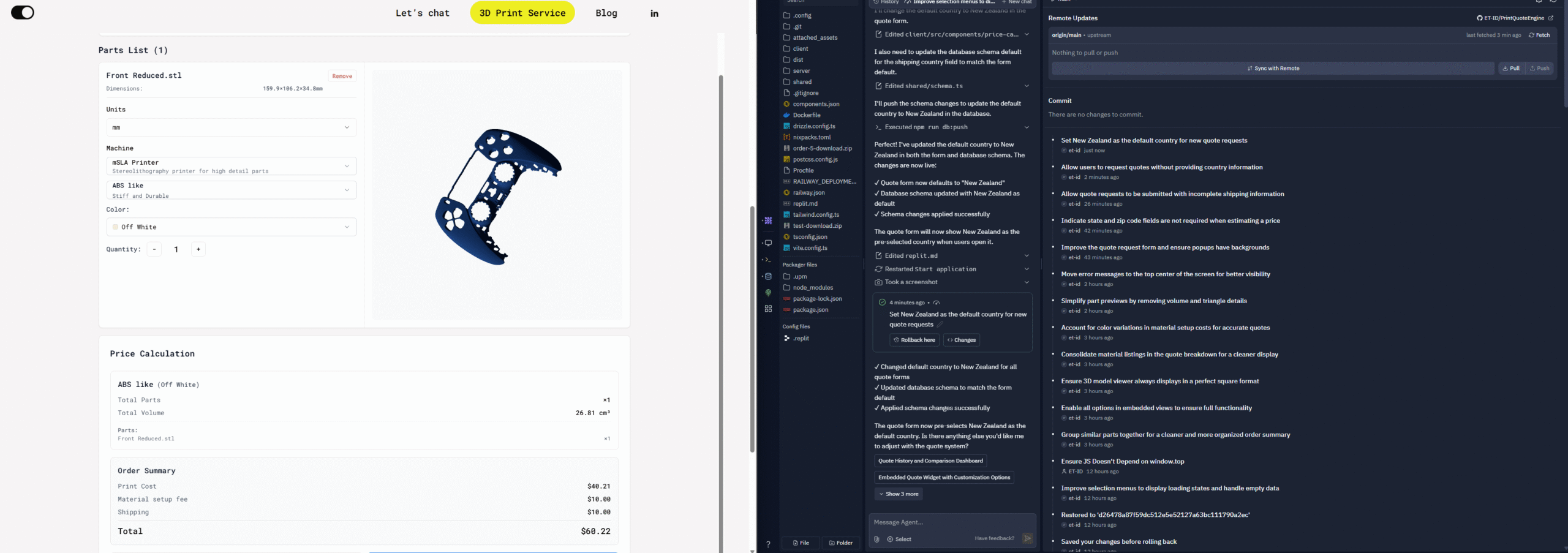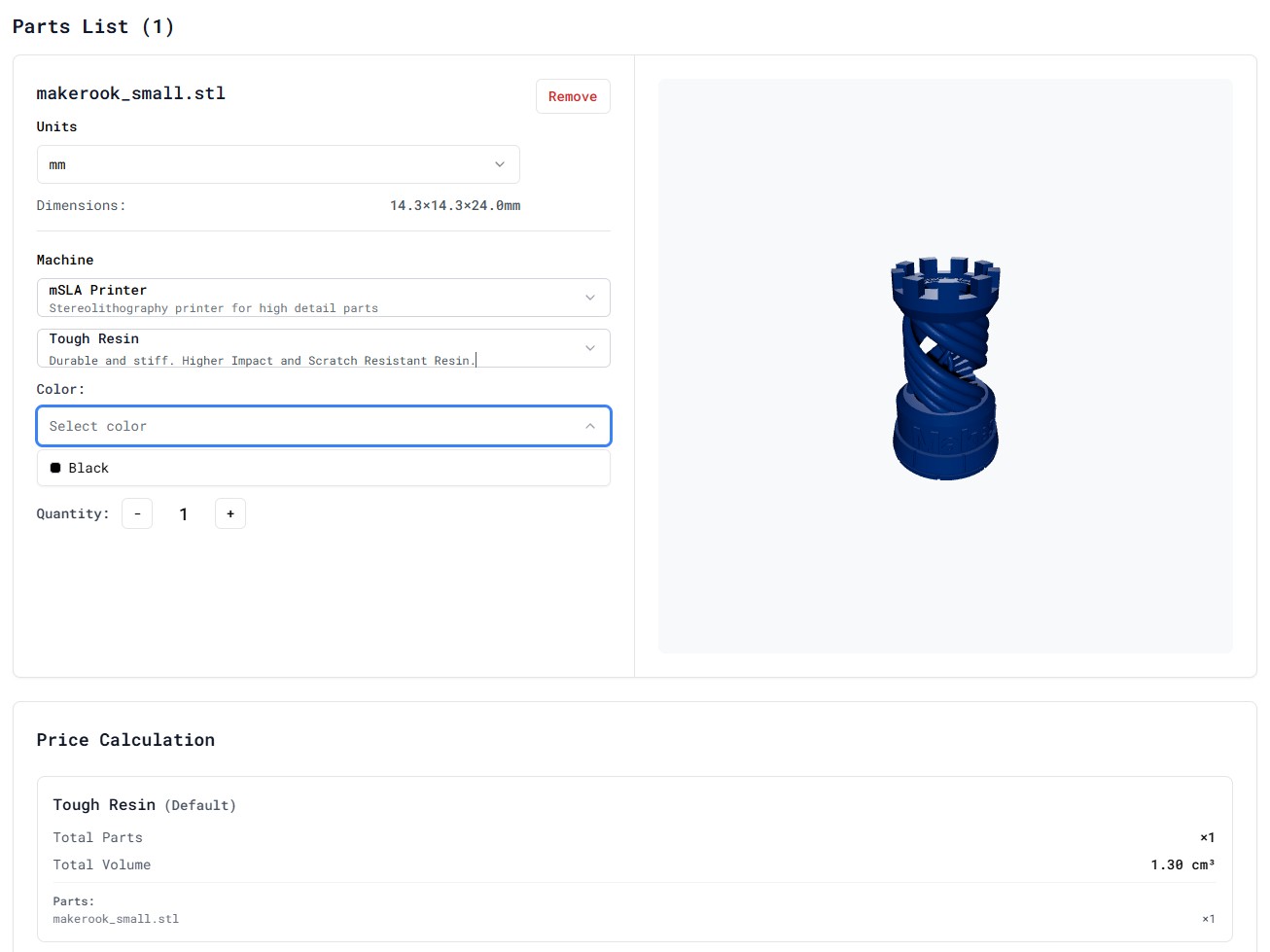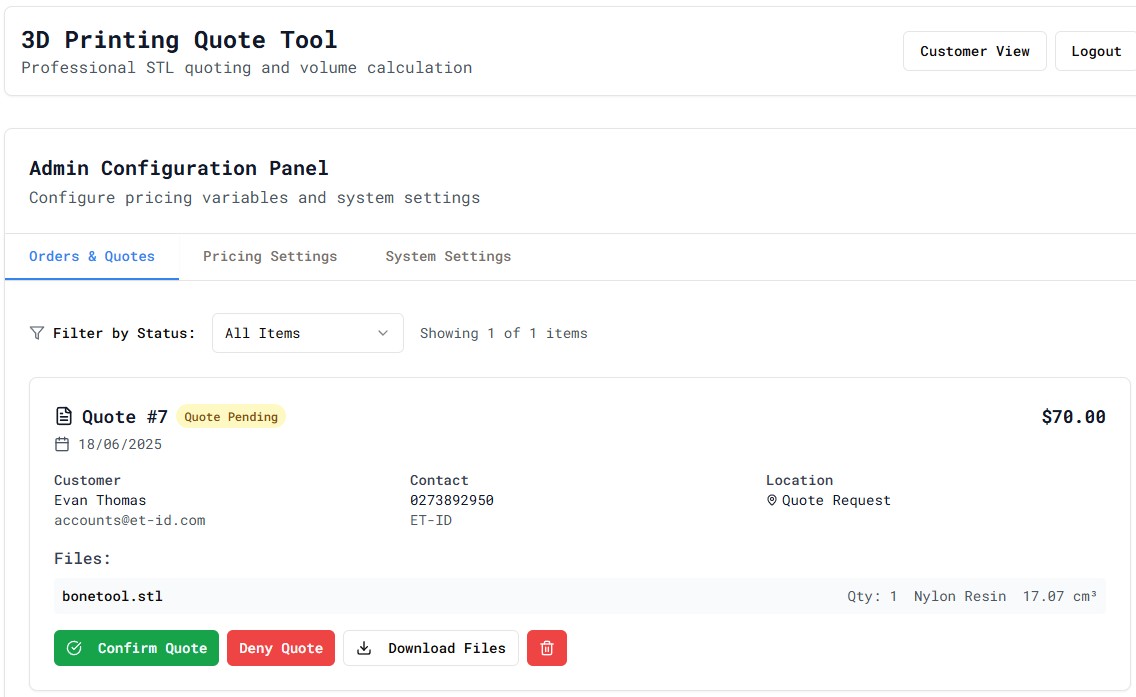I first came across the idea of “vibe coding” on a few recent podcasts. The term intrigued me: the idea of guiding AI agents to build tools not by writing strict lines of code, but by steering them with intent, context, and creative prompts.
At first, I didn’t dive in. It sounded powerful, but I didn’t have the right project to test it on.
That changed when I couldn’t find a suitable 3D print quote tool that was readily available. I needed something functional, interactive, and tailored to my workflow, so I decided to build my own.
Getting started wasn’t instant. It took a while to figure out the right way to communicate with the agents. I found that singular, clear prompts or structured bullet-point requests worked best. When you guide the agent with precision, it can be remarkably effective and surprisingly fast.
What This Tool Enables
Let’s be clear. I don’t think tools like this are a replacement for a developer. As a business owner, you still need to be cautious. Security, stability, and best practices still matter, and I wouldn’t trust an AI agent to get it right across the board.
That said, this approach does change the game when it comes to iteration speed.
What used to feel completely out of reach, something I would’ve needed a developer to prototype, I was suddenly able to create myself. That shift meant I could finally test an idea I had been sitting on without waiting, overthinking, or investing heavily up front. It gave me a fast, hands-on way to validate whether the tool was worth pursuing.
The Challenges Behind the Scenes
The surprising part? Building the base app was actually the easiest bit.
The harder part was getting the tool to behave exactly how I wanted. The agent has a tendency to “fill in the blanks,” and not always in the right way. If you’re not specific, you’ll often get features or logic that sound plausible but don’t quite match your intent.
That meant spending time refining prompts, reviewing results, and tweaking behaviours. It felt more like collaborating with a junior dev than simply delegating a task.
There was also a learning curve in figuring out how to deploy the tool. Porting it to a host and embedding it into my site took some extra effort. I leaned on ChatGPT to help me learn those parts, not just to generate code, but to explain how things fit together so I could make informed decisions.
When It Clicked
The big moment wasn’t a flashy feature. It was the workflow.
While the agent coded, I was working on other jobs. Every few minutes, I’d flick back to the agent’s tab, check the progress, give feedback, then return to my task. It felt like having a junior dev quietly building in the background, asking for clarification when needed.
That ability to work in parallel, to keep projects moving while code was being written, was a game changer. It’s a completely different rhythm to working solo, where you’re usually forced to stop or switch context when something technical gets in the way.
It made the whole process feel lighter, faster, and less mentally taxing.
Advice for Getting Started
My advice is simple: just try it.
I’m still new to this space, but already I’m realising there are tools I can build now that would’ve been well beyond my capability just a year ago.
You don’t need to know how to code in the traditional sense. But you do need to be clear in what you want, be willing to iterate, and have a bit of patience. Start with something small and specific. Be curious. See what happens.
The worst case? You waste a couple of hours and learn something.
The best case? You unlock a tool that saves you time, money, or mental overhead, and you built it yourself.





